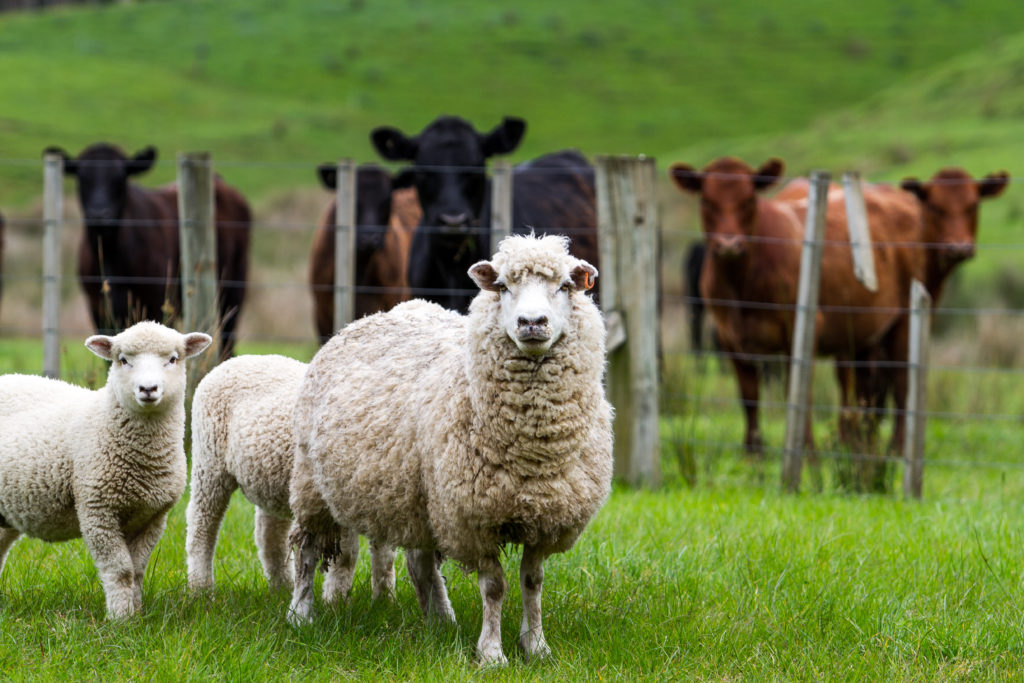In the complex world of ruminant nutrition, there are many “facts”, claims, views, and opinions floating around. Not all are true, however. Navigating what is fact or fiction can be difficult. Knowing which expert to trust can be tricky too! Misperceptions and wrong moves as a result of false facts can be costly. Veterinary and nutrition specialists at ANIMAX call-out 4 of the biggest false facts when it comes to cattle and sheep supplementation, with a focus on boluses.
#False: Ruminants can get all they need from grass
Grass is the foundation for most forage-based systems. However, irrespective of how it is managed, even the lushest of grasses and highest quality silages are most likely deficient in one or more of the trace elements essential to the health and performance of today’s productive cattle and sheep.
Cobalt, copper, iodine, and selenium together play important roles in digestion, immunity, reproduction and growth and development. A deficiency in just one trace element can impact on critical body functions, and with each trace element having a unique role, compensation by more of another trace element is not effective.
The fact of the matter is forage is a highly valuable but also highly variable nutritional source. The levels of trace elements (also known as minerals or micronutrients) don’t just vary significantly from region to region and farm to farm, but also from field to field and from one season to the next.
When supplementing grass and silage with concentrates or licks we can’t be absolutely sure every cow and every sheep is getting enough all the time. That said, supplying more than enough will either by-pass what an animal can physically absorb or can cause toxicity issues.
First, farmers must understand the nutritional profile of their soil, grass, and silage – which hinges on many factors like soil pH and soil type. You can get a broad picture through the UK Soil Observatory, but regular sampling and analysis gives a more accurate representation of what is happening on your farm.
Second, the efficacy of proactively bolusing with these trace element on a regular basis – usually every 6 months – is becoming increasingly proven and popular as it offers a level of supplementation guarantee with minimal labour.
#False: Ruminants need zinc and manganese supplementation
Zinc plays a vital role in immune function, growth, and reproduction in livestock. Zinc deficiency can lead to decreased growth rates, impaired reproductive performance, and increased susceptibility to diseases. However, zinc deficiency is not reported in forage-fed ruminants.
Manganese plays a vital role in fertility in breeding stock, and then cartilage formation and bone growth in youngstock. Manganese concentrations in grass-based diets forages are generally well above the concentration suggested for the dietary requirement of ruminants. Manganese can also interfere with availability of other trace elements.
#False: All boluses work the same way
Not all boluses are the same!
Some boluses ‘erode’. Some boluses ‘dissolve’. Some boluses ‘oxidise’. And some boluses are ‘soluble’. All these modes of action result in the bolus reducing in size and mass over time, making them more predisposed to premature passing or regurgitation. If the bolus does stay in the system, the surface area can increase over time, meaning a possible increase in exposure to rumen fluid, which may result in a quicker (and shorter) release of trace elements.
Despite this, many boluses claim a ‘6-month’ or ‘180-day’ lifespan, but we know this depends on many factors, and so cannot be guaranteed. Farmers are therefore advised to consult with an ANIMAX specialist when planning their micronutrition strategies.
ANIMAX Tracesure® features a unique patented diffusion technology™ (previously referred to as “leaching”), which in a nutshell, means the bolus offers a consistent rate of release and retains the same size and mass throughout its active life. In fact, ANIMAX Tracesure® boluses have been found expelled 12-24 months after application looking not much different to how they looked upon application.! With this, there is considerably less chance of it leaving the system before its lifecycle completion, which is up to 6 months, depending on the system.
The availability of trace elements can differ depending on the source. For example, cobalt carbonate is less available compared to cobalt sulfate in rumen fluid, meaning it cannot be utilised by the rumen bacteria as easily. On the other hand, if the source is too bioavailable it may cause toxicity.
Different boluses use different sources of trace elements which influences how available they are to the ruminant animal. In other words, what proportion of the trace elements are actually utilised by the ruminant animal.
- Cobalt is converted by rumen bacteria into vitamin B12, ANIMAX Tracesure® offers a form of cobalt that is more readily available in the rumen and thus utilised by the animal.
- Copper is required by critical enzymes in energy cycles, hormone production and red blood cell metabolism. ANIMAX Tracesure® is available with copper as a separate bolus that can be given in the same application as the wax-grooved bolus. Once in the rumen, the copper bolus dissolves rapidly, releasing copper oxide needles that lodge in the walls of the rumen. The needles then gradually dislodge and pass to the abomasum where they dissolve and pass into the small intestine to be absorbed. The copper oxide needles are uniquely manufactured in house to ensure critical parameters are met.
- Iodine is a critical component of the thyroid hormone which regulates metabolism and subsequently all body functions. ANIMAX Tracesure® contains 2 types of iodine – one for an immediate supply, and a slower less soluble form for a longer-term supply.
- Selenium is used in critical enzymes for immune function and responses to health challenges. Selenium has a narrow range of supplementation and can cause toxicity if given in too high dose. ANIMAX Tracesure® with its patented diffusion technology™ allows for high levels of selenium in a safe form. It is still important to ensure total selenium is not at a high risk level, so always consult with a SQP or vet before supplying.
#False: Boluses with vitamins are better
As is the case for trace elements, it is true that grasses and forages are often deficient in, or at least offer sub-optimal levels of, the vitamins needed for animals in production.
Vitamins A, B1, B12, D3 and E are the most vital for health and productivity on farm. Download the Vitamins table from AHDB to learn more about their function, source, and signs of vitamin deficiency.
Some boluses on the market include vitamins as well as minerals. However, vitamins are generally quite sensitive to their physical and chemical environment, and can therefore be destroyed during manufacture, where they are heated and pressurised. Moisture and storage also impact vitamin stability which can also impact on their efficacy. [2]. Furthermore, vitamin inclusion levels in boluses can be less than 10 percent of daily requirements.
Suggested Daily Vitamin Supplements (iu/head/day)
| Iu/Cow/Day | |||
| Vitamin A | Vitamin D3 | Vitamin E | |
| Dry Cows | 40000 – 60000 | 9000 -11000 | 100 – 300 |
| Lactating Cows | 50000 – 70000 | 11000 – 13000 | 120 – 140 |
| Cattle (550kg) | 46200 | 9240 | 180 |
| Cattle (400kg) | 36900 | 7385 | 131 |
| Cattle (250kg) | 23100 | 4620 | 82 |
| Lambed Ewes | 12000 | 3000 | 30 |
| Dry Ewes | 10000 | 2400 | 24 |
| Weaned Lambs | – 3333 | 800 | 8 |
Depending on the vitamin, they are more efficiently supplemented through feed concentrates, as a specific supplement, or a medicinal injection form.
Complimentary to all farming systems, ANIMAX Tracesure® with its patented technology is research proven to supply ruminants with enough of the essential trace elements – cobalt, copper, iodine, and selenium – for up to 6 months in 1 single application.
By supplying enough of the right trace elements and in the right quantity needed for digestion, immunity, reproduction, growth, and development, bolusing with ANIMAX Tracesure® can help capture the power of grass and forage.


